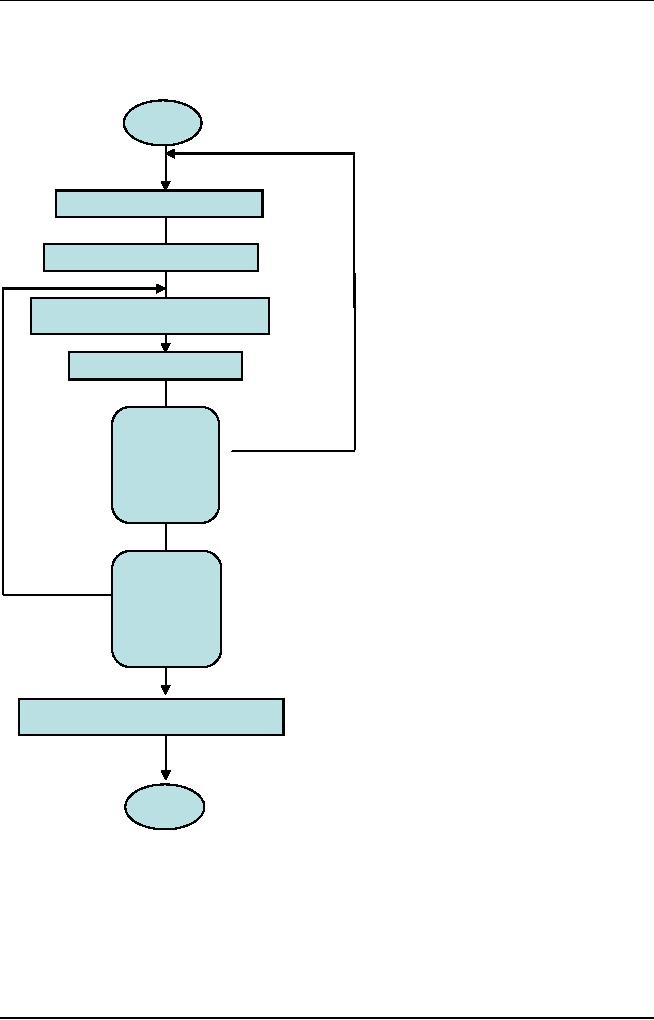 |
Software Configuration Management Vs Software Maintenance |
| << Attributes of Software Design, Key Features of Design |
| Quality Assurance Management, Quality Factors >> |

Software
Project Management
(CS615)
LECTURE
# 17
2.
Software Development
Fundamentals
Technical
Fundamentals
2.14
Software Configuration
management
b.
Controlling Versions
Version
control combines procedures and tools to
manage different
versions
of
configuration objects that
are created during software
product development.
To
control versions, you can
use Version Control
Register. In Version
Control
Register,
you enter the details of
components, such as
component
identification
numbers, their versions, and
dates of validity. It is advisable
to
release a
baseline after a version is released.
Baseline is a specification or a
product
that is formally reviewed and
agreed upon. This serves as
the basis for
further
development. Baseline can be changed only
through formal change
control
procedures. A baseline consists of a set of SCIs
that are logically
related
to each other. Baselines are established
when subsequent changes to
the
SCIs need to be controlled.
Version control is essential so that
everybody
uses
only the latest version. Any
kind of version mismatch
might result in
rework.
c.
Controlling Changes
Uncontrolled
change can lead to chaos. Change control
combines human
procedures and
automated tools to provide a
mechanism for
controlling
change.
The purpose of change control is to
monitor and control changes
in
order to
baseline SCIs. There are
various reasons that trigger
changes. A
problem
report might call for a
change. Similarly, suggestions or ideas
from
brainstorming
sessions and feedback from clients can
result in change.
Modifications
or addition to functionality and changes
in environment can
also
cause changes. The Figure 1
explains the formal change
control process
using a
flow chart.
112

Software
Project Management
(CS615)
Start
Change
request is made
Change
request is logged
Change
request is evaluated
Outcome
is notified
Yes
Is
the
Request
Rejected?
No
Is
the
Yes
Request
Deferred?
No
Change
request is implemented
Stop
Figure
1: Formal
Change Control Process
A request
for change triggers that change
control procedure. Then request
is
logged in
the change request register. Next,
the change request number is
recorded in
the change request evaluation plan.
The request is evaluated and
analyzed
to check if the change is valid. Change
request is also evaluated in
113

Software
Project Management
(CS615)
terms of
the number of items affected
and the effort involved in
effecting the
change.
Finally, the possible outcome of
the change request is
communicated.
The
request for change is rejected, deferred,
or approved. If the request
for
change is
rejected, the requestor
needs to log a fresh request. A
deferred
change request is
evaluated at a later date
while the change request that
is
approved
is implemented.
There
are tools that provide
facilities to check in and check
out so that the
same
version of the object is not
updated more than once. The
check-in and
checkout
facilities provide synchronization
control. Synchronization
control
helps to
ensure that parallel changes
performed by two different people do
not
overwrite
one another.
d.
Auditing
Configuration
audit is conducted formally by
the SQA group in
projects
where
SCM is a formal activity.
The identification, version
control, and
change
control tasks help the
developer maintain order and
decorum in an
environment
of change. However, the control
mechanisms track a change only
until an
item is generated. FTRs and software
configuration audits (SCA)
are
conducted
to ensure that change is properly
implemented. FTR verifies
the
technical
correctness of the SCI that is
subjected to change. SCA
assesses
those
characteristics of an SCI that
are not considered during
FTRs. Audit
verifies
whether the changes
specified in the request for change
are made and
additional
modifications, if any, are also
noted. Audits ensure that
FTRs are
conducted
to check for technical correctness.
Audits verify that changes
made
are
highlighted in the SCI. The
change date and change author are
specified
and the
attributes of SCI reflect
the change. The SCM procedures
for noting,
recording,
and reporting change are also followed.
Audits also ensure that
related
SCIs are updated.
e.
Communicating Changes
Another
task of SCM is communicating changes.
This task ensures
communication
between different members in the
project. It notes the
activities
performed, the time when
they are performed, those
involved in the
activities,
and those affected by the activities. In
short, the task is all
about
status
reporting. In a large project,
there is a possibility of
miscommunication
among
various people involved in the
project. This is usually done
using
configuration
status report shown in Table
11.7. The table contains
the name
of the
SCI, the latest released
version, the date of
release, brief description
of
changes
performed, and associated change request.
Further details of
the
changes
can be obtained from the
associated change request. There can
be
instances
where two developers may be
trying to modify the same
software
configurable
item
with
different and conflicting intentions.
Absence of status
reporting
could result in incorrect decisions
being taken or important
decisions
114

Software
Project Management
(CS615)
not
being communicated. At times, those
who should be pointing out
the
serious
side effects caused by a change
are not aware of the
implementation of
the
change. There are also instances of
version mismatch when teams
are
unaware
of the latest version to be
followed. To avoid such hazards due
to
lack of
communication among the
project team, changes are
communicated
among
team members. Therefore, status reporting
provides information
about
each
change to those who need to know.
Software configuration management
takes
care of changes in a software
process. SCM identifies
controls, audits,
and
reports modifications that
occur during software
development. SCM
helps
maintain
the integrity of configurable
items produced during
software
development.
⇒ Software
Configuration Management Vs Software
Maintenance
SCM is an
integral part of SQA. SCM
involves assessing the
impact of the
changes
made during SQA activities
and making decisions based on cost
and
benefit
analysis. SCM can be defined as
the art of identifying,
organizing, and
controlling
changes in a software project
with the objective of
minimizing
mistakes.
SCM is different from
software maintenance. Software
maintenance is
required
after the software is
delivered to the client and is
put into operation.
As
opposed
to this, SCM is a set of
tracking and controlling activities
that begins
when a
software project begins and ends
only when the software is
taken out of
operation.
⇒ Baselines
vs. Interim
Versions
SCM
differentiates between baselines and
interim versions. A baseline is a
tested
and
certified version of a system. Baselines
can be assigned version numbers
such
as 1.0,
2.0, 3.0, and so on. A baseline
usually undergoes intensive testing.
Interim
versions,
on the other hand, have
version numbers, such as 1.1
or 1.2. The interim
version
is a temporary version. Interim
versions have a short life
and survive only
during
bug fixing, testing, or
debugging. However, interim
versions also have a
unique
version number or name. Baselines are
more visible with the
marketing
team and
the vendors than the
interim versions. However, as
part of SCM, all
versions
of changes are saved, clearly
labeled, and archived. Archiving is
the
process
of maintaining controlled copies of
prior versions. Archiving
helps in re-
creating
earlier versions in the
event of data loss or data
corruption.
⇒ Effective
Configuration Control
Effective
configuration control requires
effective and well-defined
organization.
Any
configuration control method
must be based on the
following four
concepts:
A clearly
defined configuration management
authority must be established.
Configuration
control standards, procedures and guidelines
must be produced and
distributed
to the developers.
115

Software
Project Management
(CS615)
Configuration
control cannot be effective
without the necessary tools
and
facilities.
A
configuration management plan must be
developed at the beginning of
the
project.
The
configuration management environment consists of
the resources
necessary
for
the implementation of the
configuration control
plan.
Configuration
control tools,
including:
Automatic
version control and
Change
control tools
Monitoring,
auditing and registration support
utilities
Storage
facilities; a safe repository
for all approved
configuration items,
including:
On-site
storage for the day to
day development
process
Off-site
storage for catastrophe
recovery
⇒ Guidelines
for effective configuration
management
The
following are some
additional guidelines for
effective configuration
management.
Some of these guidelines are
equally applicable to
other
management
support functions.
·
Configuration
management requires authority in order to
be effective. This
authority
must be clearly delegated by
the project manager to the
responsible
engineers. Any
configuration management plan will become
meaningless if
the
plan cannot be
enforced.
·
Blunt
enforcement of any plan
policy or standard is best avoided,
whenever
possible.
One of the qualities of a good manager is
the ability to apply
policy
with
minimal enforcement. Whenever
policies and standards are
readily
accepted
by the developers, they are
more willingly followed and
there are
fewer
rejections of submitted material.
This leads to a more
efficient
development
process.
·
Configuration
management should be implemented from
the start of a
software
project. Many of the formal
documents issued during the
initial
concept
phase are crucial for
the requirements and design phases, and
must be
placed
under configuration
control.
·
The
early application of configuration
management is especially important
in
rapid
prototyping, spiral models, or
other iterative
development
methodologies.
These development approaches initially
produce several
116

Software
Project Management
(CS615)
versions
of each product. Many
different versions can become an
engineering
nightmare
without orderly configuration
control.
·
Occasionally
some software configuration
control activities may
overlap with
software
quality assurance activities. In
small projects, these two
functions
may be
assigned to a single support
engineer. Even in large
projects, these two
functions
are sometimes performed by a single
support group.
⇒ Misapplication
of Guidelines
It should
be noted that configuration management
can be greatly exaggerated.
The
various configuration control
activities are not an
objective in themselves,
they
are a means.
·
A typical
example of the misapplication of
configuration management (and
misguided
quality control), is a requirement to
modify reused software
to
comply
with current standards and
procedures.
·
Reused
software is software developed
previously in another project,
and
found
suitable to be incorporated into
the current project. In such
cases it
rarely
makes sense to modify a
complete and working product in
order to
make it
comply with administrative
standards intended to make it a
complete
and
working product.
117
Table of Contents:
- Introduction & Fundamentals
- Goals of Project management
- Project Dimensions, Software Development Lifecycle
- Cost Management, Project vs. Program Management, Project Success
- Project Management’s nine Knowledge Areas
- Team leader, Project Organization, Organizational structure
- Project Execution Fundamentals Tracking
- Organizational Issues and Project Management
- Managing Processes: Project Plan, Managing Quality, Project Execution, Project Initiation
- Project Execution: Product Implementation, Project Closedown
- Problems in Software Projects, Process- related Problems
- Product-related Problems, Technology-related problems
- Requirements Management, Requirements analysis
- Requirements Elicitation for Software
- The Software Requirements Specification
- Attributes of Software Design, Key Features of Design
- Software Configuration Management Vs Software Maintenance
- Quality Assurance Management, Quality Factors
- Software Quality Assurance Activities
- Software Process, PM Process Groups, Links, PM Phase interactions
- Initiating Process: Inputs, Outputs, Tools and Techniques
- Planning Process Tasks, Executing Process Tasks, Controlling Process Tasks
- Project Planning Objectives, Primary Planning Steps
- Tools and Techniques for SDP, Outputs from SDP, SDP Execution
- PLANNING: Elements of SDP
- Life cycle Models: Spiral Model, Statement of Requirement, Data Item Descriptions
- Organizational Systems
- ORGANIZATIONAL PLANNING, Organizational Management Tools
- Estimation - Concepts
- Decomposition Techniques, Estimation – Tools
- Estimation – Tools
- Work Breakdown Structure
- WBS- A Mandatory Management Tool
- Characteristics of a High-Quality WBS
- Work Breakdown Structure (WBS)
- WBS- Major Steps, WBS Implementation, high level WBS tasks
- Schedule: Scheduling Fundamentals
- Scheduling Tools: GANTT CHARTS, PERT, CPM
- Risk and Change Management: Risk Management Concepts
- Risk & Change Management Concepts
- Risk Management Process
- Quality Concept, Producing quality software, Quality Control
- Managing Tasks in Microsoft Project 2000
- Commissioning & Migration